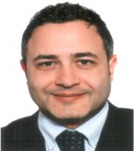Identification and Detection of Driver Drowsiness using Machine Learning Techniques

DOI:
https://doi.org/10.54060/a2zjournals.jmss.58Keywords:
Open CV, Python, Real-time detection, Face Detection, Eye blinkingAbstract
Many people die or are injured in car accidents. According to the World Health Organization, one million people die from traffic accidents every year worldwide. Drowsy, unrested, or drowsy drivers are drowsy drivers who put themselves and other road users at risk. Studies on car accidents show that major train accidents are caused by driver fatigue. In recent years, it has been revealed that driving while drowsy can cause fatigue. Nowadays, the cause of accidents while climbing is hunger. This situation is a serious problem all over the world and needs to be solved as soon as possible. In recent years, driver hijacking has become one of the leading causes of traffic accidents that can lead to death, serious bodily injury, and accidents. Economic losses and disasters. Driver fatigue can be caused by long hours of driving, drowsiness, fatigue, medications, sleep disorders, and illness. An analysis of various studies shows that there is a need for reliable technology that can detect drowsy driving and warn drivers before an accident occurs. Many studies have been conducted to improve the diagnosis and prediction of drowsy driving using different scales to assess drowsy driving. This study identified several measures categorized by the researchers as physiological, automatic, mental, and behavioral measures. This article deals with the main issues of different sleep detection methods and how to use them to detect drowsiness while driving. To warn drivers before they crash, the analysis focuses on what happens while driving, and as technology advances, it is designed to ideally identify and predict drowsy drivers. This comprehensive review provides a better understanding for researchers conducting fundamental evaluations in a field.
Downloads
References
P. Shamini, M. Vinodhini, B. Keerthana, S. Lakshna, and K. R. Meenatchi, “Driver Drowsiness Detection based on Monitor-ing of Eye Blink Rate,” in 2022 4th International Conference on Smart Systems and Inventive Technology (ICSSIT), Tirunelveli, India, pp. 1595–1599, 2022. doi: 10.1109/ICSSIT53264.2022.9716304.
T. Ahmed, O. Jyoti, and T. H. Mou, “Drivers’ Drowsiness Detection System Enhancement Using Deep Learning: CNN-based Approach,” in 2023 26th International Conference on Computer and Information Technology (ICCIT), Cox’s Bazar, Bangla-desh, pp. 1–6, 2023. doi: 10.1109/ICCIT60459.2023.10441229.
A. S. Agarkar, R. Gandhiraj and M. K. Panda, "Driver Drowsiness Detection and Warning using Facial Features and Hand Gestures," 2023 2nd International Conference on Vision Towards Emerging Trends in Communication and Networking Tech-nologies (ViTECoN), Vellore, India, pp. 1-6, 2023. doi: 10.1109/ViTECoN58111.2023.10157233.
Jagbeer Singh, Ritika Kanojia, Rishika Singh, Rishita Bansal, Sakshi Bansal, Computer Science and Engineering Dept, Mee-rut Institute of Engineering and Technology, Meerut, India ritika.kanojia.cs.2019@miet.ac.in, rishi-ka.singh.cs.2019@miet.ac.in, rishita.bansal.cs.2019@miet.ac.in, sakshi.bansal.cs.2019@miet.ac.in DOI: 10.47750/pnr.2022.13. S10.361.
T. Danisman, I. M. Bilasco, C. Djeraba, and N. Ihaddadene, “Drowsy driver detection system using eye blink patterns. Ma-chine and Web Intelligence (ICMWI),” IEEE, pp. 230–233, 2010.
Retrieval Number: 100.1/ijeat. A31591011121 DOI: 10.35940/ijeat. A3159.1011121 Journal Website: www.ijeat.org.
S. Titare, S. Chinchghare, and K. N. Hande, “Driver drowsiness detection and alert system,” International Journal of Scien-tific Research in Computer Science, Engineering and Information Technology, pp. 583–588, 2021. Available at doi: https://doi.org/10.32628/CSEIT2173171 Journal URL: https://ijsrcseit.com/CSEIT2173171.
E. Magán, M. P. Sesmero, J. M. Alonso-Weber, and A. Sanchis, “Driver Drowsiness Detection by Applying Deep Learning Tech-niques to Sequences of Images,” Appl. Sci, vol. 2022. https://doi.org/ 10.3390/app12031145.
M. S. Devi, M. V. Choudhari and P. Bajaj, "Driver Drowsiness Detection Using Skin Color Algorithm and Circular Hough Transform," 2011 Fourth International Conference on Emerging Trends in Engineering & Technology, Port Louis, Mauritius, pp. 129-134, 2011. doi: 10.1109/ICETET.2011.42.
M. Omidyeganeh, A. Javadtalab and S. Shirmohammadi, "Intelligent driver drowsiness detection through fusion of yawn-ing and eye closure," IEEE International Conference on Virtual Environments, Human-Computer Interfaces and Measurement Systems Proceedings, Ottawa, ON, Canada, pp. 1-6, 2011. doi: 10.1109/VECIMS.2011.6053857.
M. M. El-Barbary, G. S. Maximous, S. Tarek, and H. A. Bastawrous, “Validation of driver drowsiness detection based on humantenna effect using facial features,” in 2021 International Conference on Microelectronics (ICM), 2021, doi: 10.1109/ICM52667.2021.9664899.
I-R. Adochiei et al., "Drivers’ Drowsiness Detection and Warning Systems for Critical Infrastructures," International Confer-ence on e-Health and Bioengineering (EHB), Iasi, Romania, pp. 1-4, 2020. doi: 10.1109/EHB50910.2020.9280165.
B. Yazici, A. Özdemir and T. Ayhan, "System-on-Chip Based Driver Drowsiness Detection and Warning System," Innovations in Intelligent Systems and Applications Conference (ASYU), Antalya, Turkey, pp. 1-5, 2022. doi: 10.1109/ASYU56188.2022.9925481.
V. Kalisetti, V. S. C. Vasarla, S. B. Kolli, R. Varaparla, V. Enireddy and M. Mohammed, "Analysis of Driver Drowsiness Detec-tion Methods," Second International Conference on Electronics and Renewable Systems (ICEARS), Tuticorin, India, pp. 1481-1485, 2023. doi: 10.1109/ICEARS56392.2023.10084986.
N. Ali, I. Hasan, T. Özyer and R. Alhajj, "Driver Drowsiness Detection by Employing CNN and Dlib," 22nd International Arab Conference on Information Technology (ACIT), Muscat, Oman, pp. 1-5, 2021. doi: 10.1109/ACIT53391.2021.9677197

Downloads
Published
How to Cite
CITATION COUNT
Issue
Section
License
Copyright (c) 2024 Mohammad Faisal, Dr Sheenu Rizvi

This work is licensed under a Creative Commons Attribution 4.0 International License.
























